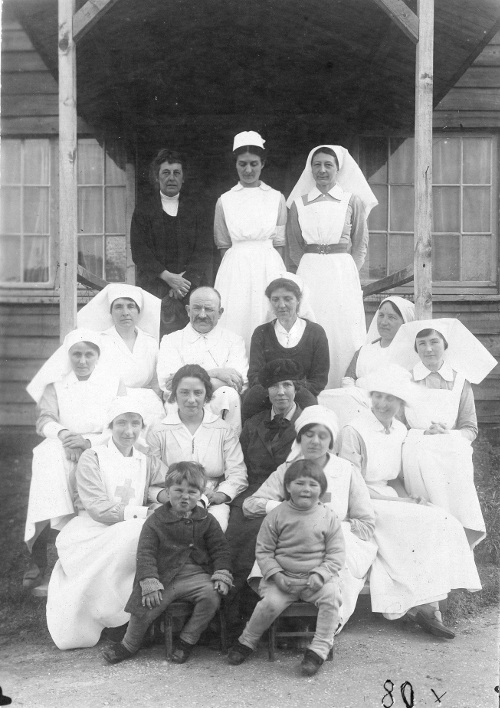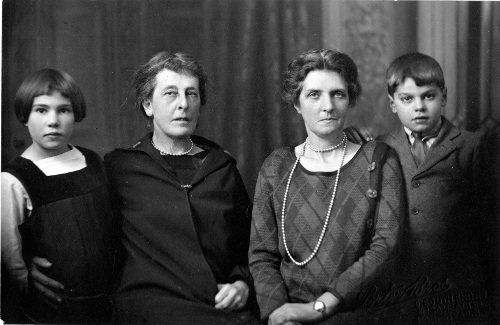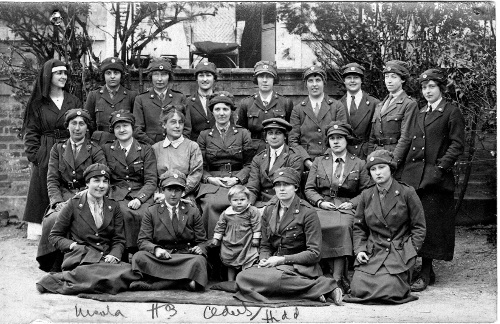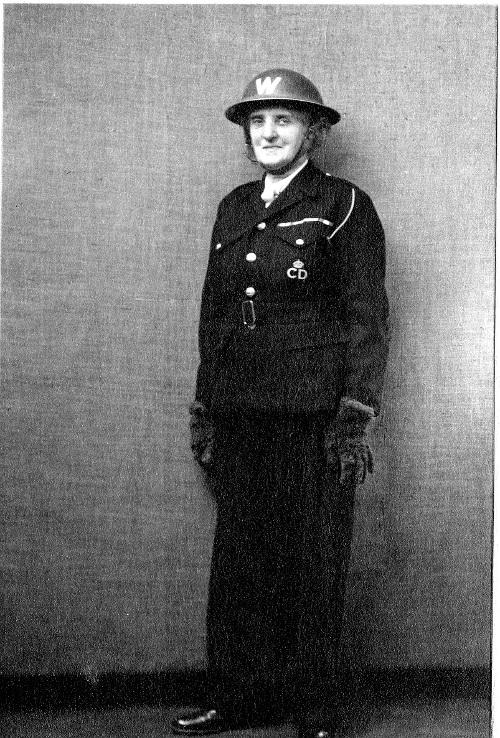Archives Hub feature for May 2018
The archive of the Royal College of Nursing is a fascinating mix of business and personal. We collect the organisational records of the College, which go back to its foundation in 1916. These include meeting minutes, premises records, RCN publications and marketing ephemera, and tell the story of the College as a professional organisation (and later a trade union) for nurses. The other half of the archive consists of a large number of personal papers collections, each relating to an individual nurse and containing a vast array of items, from lecture notes and badges to First World War scrapbooks and photographs. Some of our oldest material predates the founding of the College by 50 years. The RCN’s personal papers collection is a wonderful source for learning about the lives and professional challenges of nurses across the UK.

The personal papers collection of Cathlin du Sautoy is a perfect example of the variety shown by our collections, not least because Cathlin du Sautoy was herself a very interesting woman.
Cathlin du Sautoy was born in 1875 to John and Annie du Sautoy. Her father was a civil engineer and the family lived in Yorkshire. After three years’ study of Domestic Science at Cardiff College she was appointed as lecturing sister at Tredegar House, the training school for nurses for the London Hospital. Her teaching subject was Sick Room Cookery, Physiology, Hygiene and the Chemistry of Food. She then entered training at Guy’s Hospital for three years and was the Gold Medallist of her year. A career in nursing and nurse teaching followed, at such institutions as the Queen Victoria Jubilee Institute, the British Red Cross Society and the Ulster Medical Board. She was deeply involved with nursing in France during and after the First World War, organising Red Cross units in the UK and in France, and helping to set up an English-style District Nurse programme in Reims after the end of the war.

During the First World War, when she was in her late 30s, she met Lady Hermione Blackwood, who was a VAD in France. They would become lifelong companions, settling in the Vale of Health in Hampstead with their two adopted French children, Victor and Yvette, after the war. The couple acted as air-raid wardens during the Second World War and were active in the local area and hospital. Cathlin du Sautoy died in 1968, eight years after the death of Hermione Blackwood.

Her papers clearly show an extremely capable nurse and family-oriented woman. The two sides of her obviously fitted neatly into each other, with many photographs of Cathlin and Hermione in full nursing uniform, holding baby Victor (known as ‘Hiddy’) in France. There are letters in the collection about Cathlin’s career alongside letters from Hermione about the children’s clothes and their holiday plans. There are Cathlin’s nursing badges and medals and a copy of Hermione’s Queen’s Nursing Institute magazine. The collection is a beautiful mix of the personal and the professional and shows how, in nursing, the two often go hand-in-hand. The couple met whilst nursing and, whilst Lady Hermione Blackwood did not nurse after the war, Cathlin du Sautoy was actively involved in the management of the Royal College of Nursing and the running of the local hospital. She obviously had a deep interest in helping others, as her and Hermione’s stints as air raid wardens during the Second World War (when du Sautoy was in her 70s) show.

You can see more images of Cathlin and Hermione at the exhibition currently on display at RCN Scotland’s headquarters in Edinburgh – the couple are an important part of the exhibition, which celebrates diversity in nursing and is based largely on the RCN’s personal papers collections.
Sophie Volker, Archivist
Royal College of Nursing Archives
Related
Papers of Cathlin Du Sautoy, 1904-2007
Explore all Royal College of Nursing collections on the Archives Hub.
Royal College of Nursing exhibition: Hidden in plain sight: celebrating nursing diversity
All images copyright Royal College of Nursing Archives and reproduced with the kind permission of the copyright holders.
